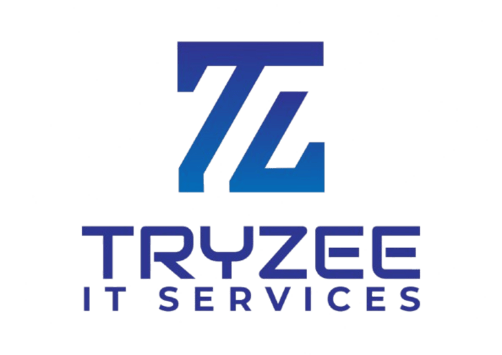The Future of Managed Cloud Services
As we move further into the digital age, managed cloud services continue to evolve at a rapid pace, reshaping the IT landscape and redefining how businesses operate. This article explores the emerging trends and makes predictions about the future of managed cloud services, offering insights into how these developments will impact businesses and the broader technology ecosystem.
The Current State of Managed Cloud Services
Before we dive into the future, let’s briefly recap the current state of managed cloud services. Today, managed cloud services provide businesses with:
- Infrastructure management
- Application hosting and maintenance
- Security and compliance solutions
- Data storage and backup
- Scalability and flexibility
- Cost-effective IT solutions
These services have already transformed how businesses approach their IT needs, but the future promises even more dramatic changes. Read more about managed cloud services.
Emerging Trends in Managed Cloud Services
1. Multi-Cloud and Hybrid Cloud Environments
Trend: Businesses are increasingly adopting multi-cloud and hybrid cloud strategies to optimize performance, reduce costs, and avoid vendor lock-in.
Prediction: By 2025, over 90% of enterprises will adopt a multi-cloud or hybrid cloud strategy, with managed service providers (MSPs) playing a crucial role in orchestrating these complex environments.
Impact: MSPs will need to develop expertise across multiple cloud platforms and create tools for seamless integration and management of diverse cloud environments.
2. Edge Computing Integration
Trend: The rise of Internet of Things (IoT) devices and the need for real-time processing is driving the adoption of edge computing.
Prediction: Edge computing will become a standard offering in managed cloud services portfolios by 2023, with 5G technology accelerating its adoption.
Impact: MSPs will extend their services to manage and secure edge devices, creating new opportunities for real-time data processing and analysis.
3. Artificial Intelligence and Machine Learning
Trend: AI and ML are being integrated into cloud services for enhanced automation, predictive analytics, and intelligent decision-making.
Prediction: By 2024, AI-driven cloud management platforms will automate over 50% of routine IT tasks, significantly reducing operational costs and human error.
Impact: MSPs will leverage AI and ML to offer more proactive and predictive services, enhancing system performance and security.
4. Serverless Computing
Trend: Serverless architectures are gaining popularity due to their scalability and cost-efficiency.
Prediction: Serverless computing will account for 25% of all cloud workloads by 2025, with MSPs playing a key role in migration and management.
Impact: MSPs will need to develop new skills and tools to effectively manage serverless environments, focusing on application-level management rather than infrastructure.
5. Enhanced Security and Compliance
Trend: With increasing cyber threats and stringent regulations, security and compliance are becoming central to managed cloud services. To support these efforts, we conduct rigorous cybersecurity risk assessments that help uncover vulnerabilities before they become problems.
Prediction: By 2023, 60% of enterprises will use managed cloud services primarily for their advanced security features and compliance expertise.
Impact: MSPs will invest heavily in security technologies and compliance certifications, potentially partnering with specialized security firms to offer comprehensive solutions.
6. Containerization and Microservices
Trend: Containers and microservices architectures are becoming the standard for application development and deployment.
Prediction: By 2024, over 70% of new cloud-native application developments will use container-based approaches and microservices architectures.
Impact: MSPs will need to offer robust container management services and expertise in microservices architectures to remain competitive.
7. Sustainability and Green Cloud Computing
Trend: There’s growing awareness and demand for environmentally sustainable cloud solutions.
Prediction: By 2025, environmental impact will be a top-three criterion in cloud purchase decisions, with MSPs expected to provide transparent sustainability metrics.
Impact: MSPs will invest in green technologies and optimize their operations for energy efficiency, potentially leading to new eco-friendly service offerings.
The Evolving Role of Managed Service Providers
As these trends reshape the cloud landscape, the role of managed service providers will evolve significantly:
1. From Managers to Strategic Partners
MSPs will transition from being mere service managers to strategic partners, helping businesses navigate the complex cloud ecosystem and align their IT strategies with business goals.
2. Specialization and Niche Expertise
As cloud technologies become more diverse and complex, we’ll see a rise in specialized MSPs focusing on specific industries, technologies, or cloud platforms.
3. Automation and Self-Service
MSPs will increasingly offer self-service portals and automated solutions, empowering clients to manage routine tasks while focusing on higher-value services.
4. Data Analytics and Insights
With access to vast amounts of operational data, MSPs will position themselves as data analytics partners, offering valuable insights to drive business decisions.
5. Continuous Innovation
To stay competitive, MSPs will need to continuously innovate, adopting new technologies and methodologies to deliver value to their clients.
Challenges and Opportunities
The future of managed cloud services presents both challenges and opportunities:
Challenges:
- Skill Gap: The rapid evolution of cloud technologies will create a significant skill gap, making it challenging for MSPs to find and retain qualified talent.
- Security Threats: As cloud environments become more complex, security threats will evolve, requiring constant vigilance and innovation in security measures.
- Data Privacy Regulations: Increasing data privacy regulations worldwide will add complexity to cloud management and compliance.
- Cost Pressures: As the market matures, MSPs will face pressure to reduce costs while maintaining service quality.
Opportunities:
- Expanded Market: The growing adoption of cloud services across industries will expand the potential market for MSPs.
- Value-Added Services: The complexity of future cloud environments will create opportunities for MSPs to offer high-value, specialized services.
- AI-Driven Innovations: AI and ML will enable MSPs to create innovative services and improve operational efficiency.
- Global Reach: Cloud technologies will allow MSPs to serve clients globally, expanding their potential customer base.
Predictions for 2030 and Beyond
Looking further into the future, here are some bold predictions for managed cloud services by 2030:
- Quantum Cloud Services: Quantum computing will begin to be offered as a managed cloud service, revolutionizing certain types of data processing and analysis.
- AI-Managed Clouds: Fully autonomous AI systems will manage large portions of cloud infrastructure with minimal human intervention.
- Immersive Cloud Experiences: Virtual and augmented reality interfaces will become common for interacting with and managing cloud environments.
- Biometric Security: Advanced biometric authentication will become standard in managed cloud services, enhancing security and user experience.
- Space-Based Cloud Services: The first cloud data centers in Earth’s orbit will be launched, offering unique advantages in global data distribution and disaster resilience.
Preparing for the Future of Managed Cloud Services
To thrive in this evolving landscape, businesses and MSPs should consider the following strategies
Engaging expert IT consulting can help align cloud trends like hybrid architectures or AI‑driven platforms to your business strategy.
- Invest in Continuous Learning: Stay updated with the latest cloud technologies and trends through ongoing education and training.
- Embrace Automation: Leverage automation tools and AI to improve efficiency and focus on high-value activities.
- Prioritize Security and Compliance: Make security and compliance central to your cloud strategy, not an afterthought.
- Develop a Multi-Cloud Strategy: Prepare for a multi-cloud future by developing expertise across different cloud platforms.
- Focus on Business Outcomes: Align cloud strategies with specific business outcomes rather than just technical metrics.
- Cultivate Partnerships: Build strong partnerships with cloud providers, technology vendors, and specialized service providers.
- Embrace Sustainability: Incorporate environmental considerations into your cloud strategy and operations.
Conclusion: A Cloud-Powered Future
The future of managed cloud services is bright, promising unprecedented levels of efficiency, innovation, and value for businesses of all sizes. As we move towards 2030 and beyond, we can expect to see a cloud ecosystem that is more intelligent, secure, and integrated into every aspect of business operations. These shifts are integral to a broader digital transformation that revolutionizes how businesses operate.
For managed service providers, this future presents both challenges and enormous opportunities. Those who can adapt to the changing landscape, continuously innovate, and provide value beyond basic infrastructure management will thrive.
For businesses, the evolution of managed cloud services will offer new ways to optimize operations, drive innovation, and compete in an increasingly digital world. The key to success will be choosing the right partners, staying informed about emerging technologies, and aligning cloud strategies with long-term business goals.
As we stand on the brink of this exciting future, one thing is clear: the cloud will continue to be a driving force in shaping the business and technology landscape for decades to come. Those who embrace and adapt to these changes will be well-positioned to lead in the digital age.



